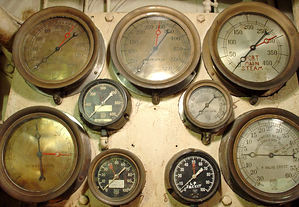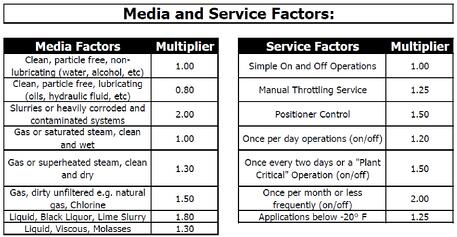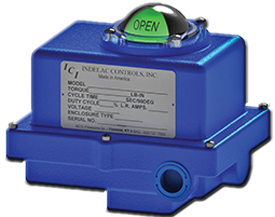
Today’s sophisticated process-control systems require a deep understanding of the specifications of each element in the control package. Since each component will help ensure that your automated valve performs to standards, understanding the uses and limitations of every part of your actuator is critical to the valve’s overall success.
Although valve actuators are essential to any valve-automation package, many other elements play important roles in valve system communication and process/flow-control requirements, including:
- Pilot valves
- Limit switches
- Positioners
- Speed controls
- Transducers
- Other control accessories
An automated valve system should include the following specifications:
- Valve size
- Valve type
- Model number
- Valve manufacturer
- Valve torque (in./lb.)
- Line pressure (Psi)
- Media temperature (°F)
- Media (slurry, gas, etc.)
But before you can start to think about the rest of your specifications, you need to choose the type of valve actuator that works best with your setup. The choice between a pneumatic and an electric actuator will impact the rest of your valve-specification process.

Note: Consult the valve manufacturer for specific Safety Factor recommendations.
Pneumatic vs. Electric Actuators
Both pneumatic and electric actuators are useful across a broad range of valve applications. Each type of actuator has its advantages and disadvantages, and choosing one depends primarily on your application’s specific requirements.
The main points to consider when comparing the two are:
- Power source
- Temperature range
- Environment/hazardous areas
- Duty cycle
- Stalling
- Speed control
- Modulating control
- Torque-to-weight ratio
To learn more about these specifics and other variables, download our free eBook, “How to Select an Actuator.”
Applications
Actuator torque and sizing depends on your valve’s applications. If you intend your valve for a process that handles clean liquids at moderate pressures and temperatures, the manufacturer’s published operating torque usually suits your actuator’s size.
But if your valve operates under other conditions (e.g., unique liquids, extreme temperatures, or high/low pressures) you may need to increase the torque to adequately operate your valve.
If this is the case, you’ll need a sizing safety factor, which you can apply based on the following guidelines:
Selecting an Electric Actuator
Electric actuators are geared motors with a variety of electrical components (i.e., limit switches, heaters, and circuit boards) built to meet the exact automation requirements of a process-control system. Since these actuators run on electrical components, they’re housed in enclosures designed for specific area classifications based on NEMA ratings.
One of the critical differences between pneumatic and electric actuators is the power source that drives their motions. With electric actuators, electricity drives the actuator to produce movement.
Let’s look at some of the considerations for electric actuators.
Specifications ChecklistHere are some of the basic specifications you should check when choosing an electric actuator:
- NEMA rating: Depending upon your environment, you will need to select from NEMA 4, NEMA 7, or NEMA 4X to house your actuator’s electrical components
- Motor voltage: You may need specific voltage to drive your valve’s automation processes (e.g., 12, 24, 115, or 220 VAC or VDC)
- Three-phase specify voltage
- Compartment heater
Limit Switches
Electric actuator limit switches provide the necessary number of electrical contacts in the open, closed, or intermediate positions. Most standard electric actuators have two SPDT limit switches—one for the open position, and one for the closed position—to control rotary travel as desired. You can always specify additional contacts that you may need in either the open, closed, and intermediate positions.
Manual Override
A manual override is a safety and productivity mechanism that provides valve operations in the case of an electrical failure or for startup and setup procedures. The handwheel should not rotate during normal operations.
Torque Switches
Actuators with an output of 5000 in-lbs torque or higher may require the use of torque switches. These components protect your automated valve and motor, and they’re necessary for the tight closure of torque-seated valves.
Electronic Speed Control
Since electric actuators use geared motors that have fixed speeds relative to the layout of the gear train, some manufacturers offer electronic speed controls that use a rotary output to increase speeds (usually 5–25 seconds for 90°). If you require a cycle time greater than the one specified, you should invest in an actuator with an electronic speed control to improve speed and cycle times.
Separate Controls
There are multiple separate control options to consider with electrical actuators:
- Local/remote switch
- Three-position rotary switch (open/stop/close)
- Three-push buttons (open/stop/close)
Positioner
Electric actuators use positioners to position the valve in response to a control signal. They rely on input maDC signals and optional position transmitters.
Position Transmitter
A position transmitter provides continuous feedback for the valve position. You can get these with a slide wire (potentiometer) and either a two- or four-wire 4–20 maDC output. Two-wire outputs have integral power supplies, but four-wire outputs require a power supply.
See Indelac Pneumatic Actuators: Double Acting & Spring Return
Control Options for Electric Actuators
One of the most appealing aspects of electric actuators is their versatility across many different valve-automation requirements. This means that you can easily configure control cards, wirings, and switches to meet your granular needs.
A three-position control package can provide 0°, 90°, and 180° rotation for multiported three-position valves. These actuators come with mid-position stops from both or either extreme. If you elect to stop from either extreme, you can also choose between clockwise and counterclockwise motions.
These systems also incorporate integral local control stations that mount directly to actuator housing. These stations include local/remote switches plus open/close switches for local operation. Additional optional features include key locks and open/close lights.
Other Electric Actuator Options
Electric actuators come with many additional customization options and add-ons, including:
- Interposing relays
- Plug and socket connectors
- DC motors
- Battery backups for failsafe operation
- Special coatings
Selecting a Pneumatic Actuator
The other type of actuator — pneumatic actuators — use compressed air (or gas) to power their motions. You can also select from a few different variables when configuring your pneumatic actuator.
Sizing Data
You will need to select your sizing data necessary for your pneumatic valve. Considerations for this process include:
- Valve torque (in./lb.)
- Sizing safety (%)
- Double-acting or spring return
- Fail open or close
- Fail on: electric only, pneumatic only, or electric and pneumatic
- Operating temperature range (°F)
- Minimum/maximum operating speed (seconds/90°) to open and close
- Minimum air pressure (psig)—it’s important to note that if a range of pressure is being used for your valve operations, the minimum pressure should always be specified when it comes to sizing.
Pilot Valve
Unlike electric actuators, pneumatic actuators are piloted by a solenoid valve. The manufacturer will size this valve flow rate to help provide adequate speed of operation.
There are five main types of pilot valves to choose from, and each comes with further modification potential:
- Double-acting actuator: four-way, five-ported, or single-coil options
- Spring-return actuator: three-way, three-ported, or single-coil options
- Remote mount: Located away from the actuator, usually on a control panel or a manifold
- Local mount: Attached at the actuator itself and adapted with tubings and fittings
- Direct mount: Some manufacturers offer an integral air manifold, which lets the solenoid valve be attached directly to the actuator, eliminating the need for fittings and tubes according to the NAMUR standard
These valves can be built from materials including aluminum, bronze, and stainless steel. In addition, coils can be modified to a number of specifications, such as:
- Coil voltage
- Coil maximum temperature
- Class A (230°F)
- Class F (310°F)
- Class H (350°F)
- Open energized position
- Closed energized position
Also, you can select from the following pilot valve options:
- Manual override
- Maintained
- Momentary
- Locked
- Air pilot
- Single or dual coil (available for four-way valves only)
Finally, you will need to specify the actuator’s speed of operation in one or both cycle directions. Most pilot valves include NPT exhaust ports that may be fitted with a needle valve or with speed-control valves that function in either the open or closed direction.
Limit Switches
Pneumatic actuator valves also rely on limit switches to indicate the closed, open, and intermediate positions of the valve. These are electrical components, so they need to be housed in NEMA-rated containment units to meet area classifications.
Here are some specifics that you can choose from when it comes to limit switches.
- NEMA rating: NEMA 4, NEMA 7, or NEMA 4X
- Switch styles: SPDT, DPDT, SPST, etc.
- Number of switches for open, closed, and intermediate positions
- Electrical rating: amps and volts
- Visual indicators
- Switch designs: snap acting, hermetically sealed reed switches, noncontact, or others distributed by your supplier
Positioners
Positioners are used with piston actuators and some diaphragm actuators to convert a control signal to a valve position in modulating service. There are two basic styles of positioners: pneumatic and electro-pneumatic.
· Pneumatic positioners have input-control signals that measure inputs in pounds per square inch. They also have signal/position psigs for valve-open and valve-closed conformations. They can be built with linear, quick-opening, and other cam styles, and they include visual indicators for ease of use.
· Electro-pneumatic positioners measure input control signals in milliamperes. They also measure signal and position in milliamperes for valve-open and valve-closed conformations. Like pneumatic positioners, they can be designed with linear, quick-opening, or other cam styles depending on their application. However, they offer more customization options than pneumatic positioners.
Most off-the-shelf quarter-turn valves have equal percentage flow characteristics. This is generally acceptable for most applications. If other characteristics are required, a replaceable characterized cam may be used.
Additionally, manufacturers can opt for rotary position transmitters. These devices provide continuous feedback of the valve position with a resistive or current output signal. They achieve this using a potentiometer, but these devices may not be accurate over long distances due to the inherent resistance of the wire. It’s important to specify the resistance range of these transmitters, but most of them default to 90° of rotation. They achieve current feedback through a resistance-to-current conversion circuit, which is generally preferred for transmission over long distances. They can achieve outputs of 4–20 mA over 90° of rotation, and they can be rated as NEMA 4, NEMA 7, or NEMA 4X depending on construction.
Indispensable Actuators from Indelac
Choosing the correct electric pneumatic actuator can be difficult. We at Indelac offer expert actuator consulting and services for a diverse range of clients. If you don't know what specifications you need, we can help walk you through the selection journey.
If you’re looking to take advantage of an electric actuator for your automated valve processes, contact us today.
From SVF "How to Select an Actuator" Guide. Access their Resource Library Here.






